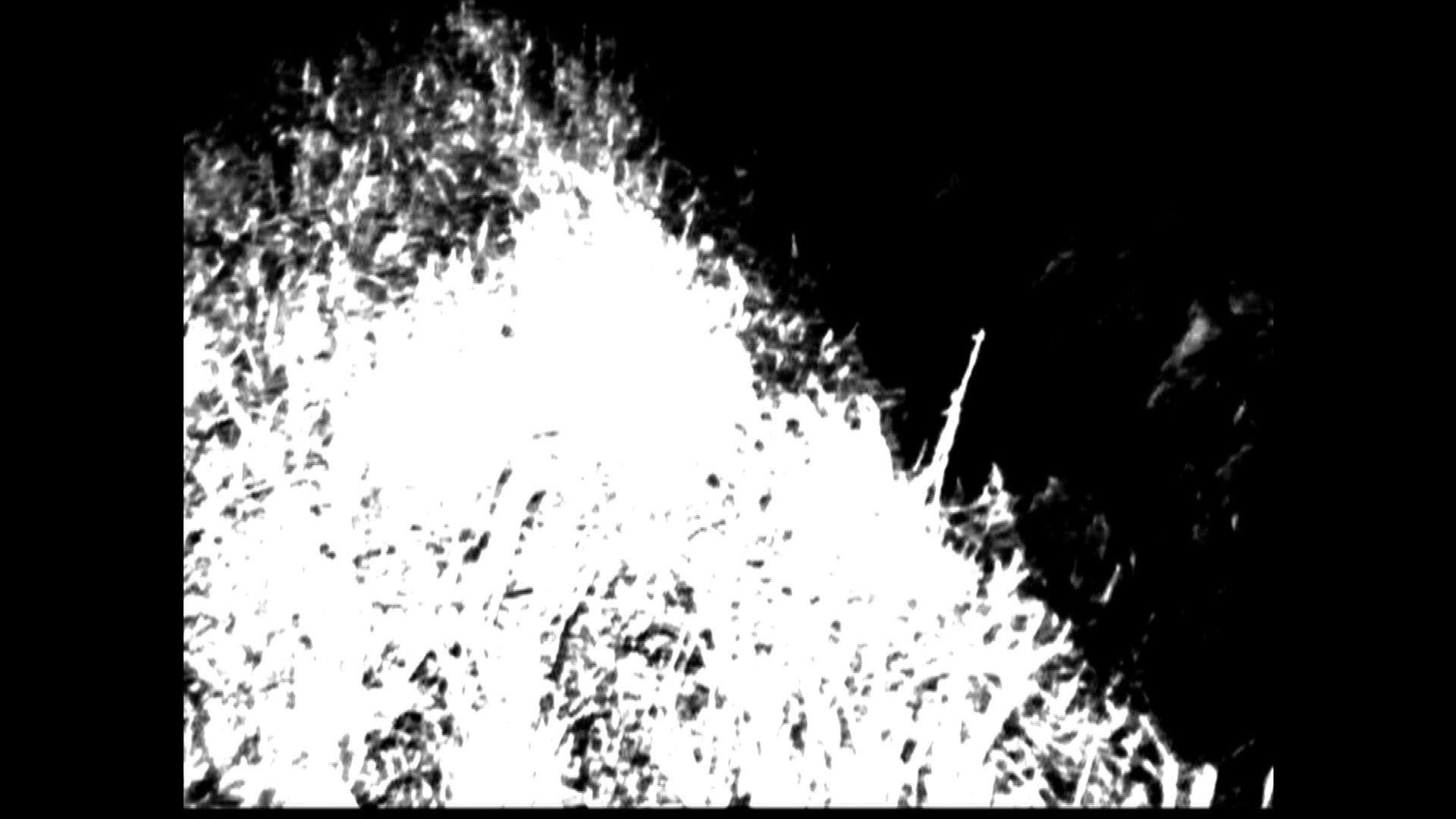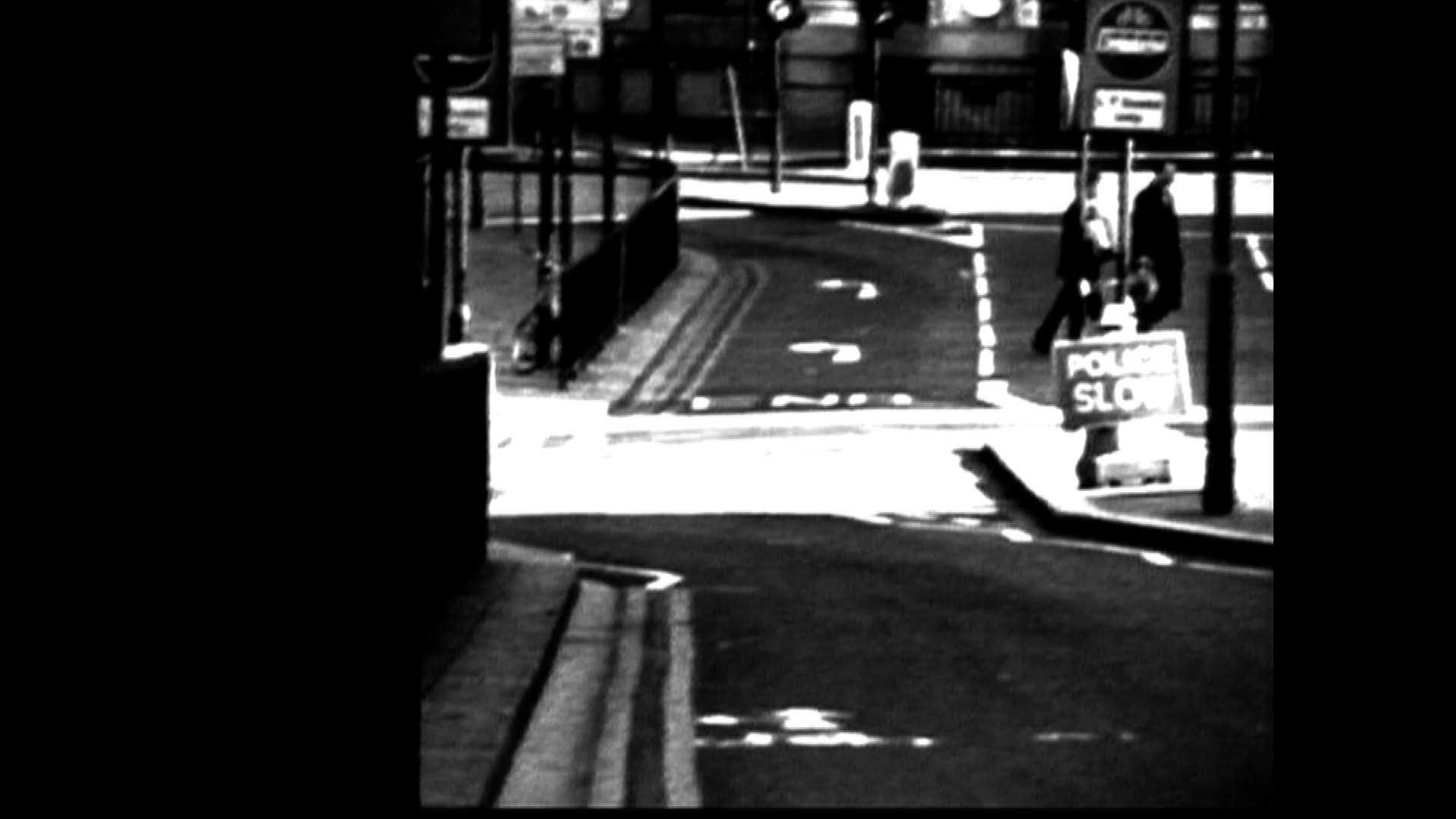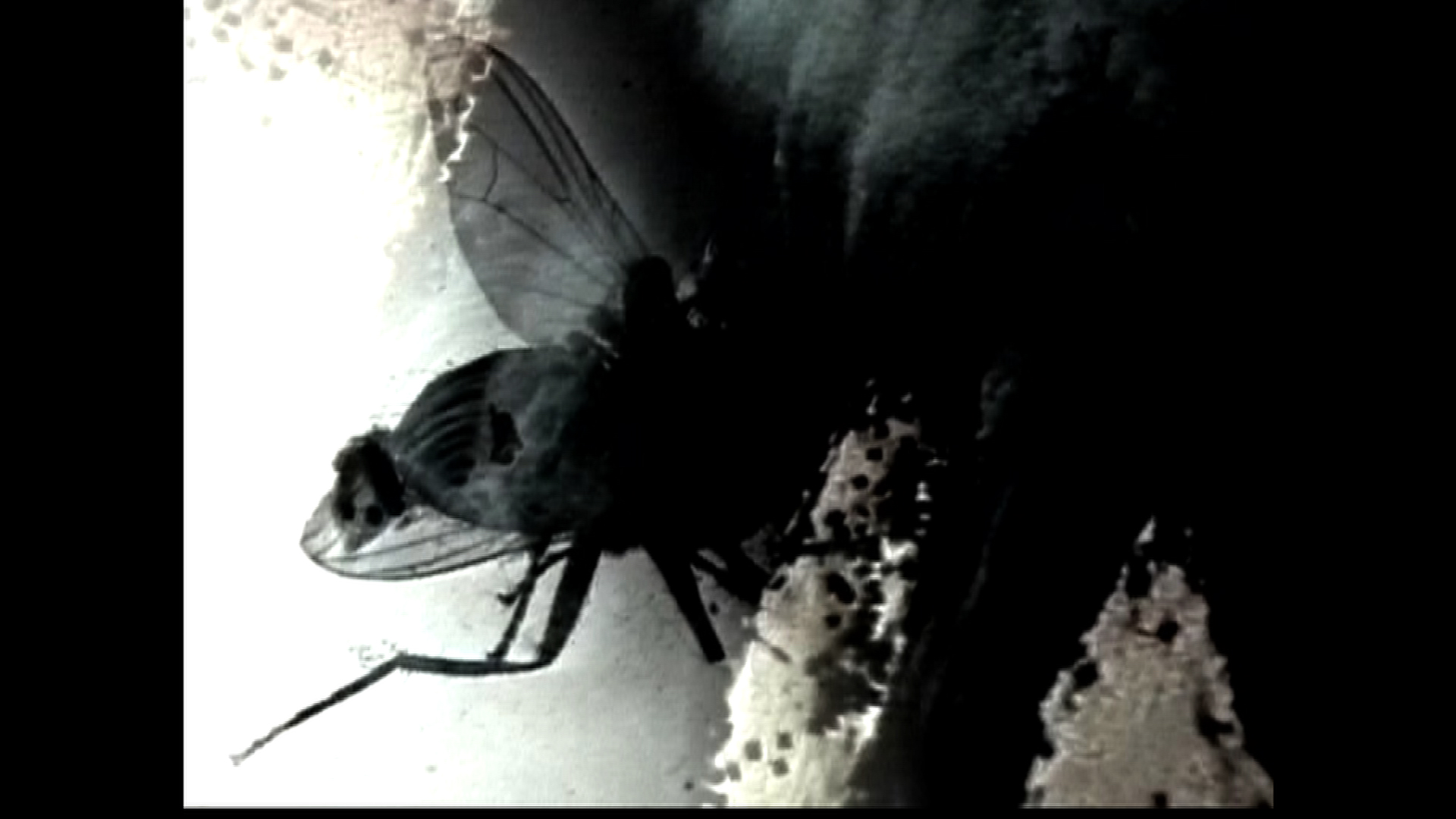June 21, 2021
In spring 2021, the Center organized its first exhibition exclusively for an online display. The short films on view in Art in Focus: The Provocation of Conditions showcase four decades of experimental British filmmaking, including Lis Rhodes’s Orifso (1999). The title of the exhibition was taken from Rhodes’s essay “Noise of Memory” (2012).
“The provocation of conditions arrests continuity.” Rhodes explains. “This pause, this catching of breath, captures the illegality of inequity. Public resistance is one of the few possible ways for voices to be heard—and that can now be dangerous in many places. In Orifso the resistance in occupied France had to be silent and covert.”
The student curators Merritt Barnwell (SY 2022) and Adam Chen (TD 2022) worked with the Center’s Linda Friedlaender, Head of Education, and Indie A. Choudhury, Postgraduate Associate in the Research department, on developing the exhibition and engaging with the artists virtually as a result of the global pandemic. Barnwell and Chen asked Rhodes to share her insights about her practice and Orifso through a series of email exchanges. Below are the students’ questions and Rhodes’s responses:
Unlike mediums such as painting or printmaking, with exceptions of course, the technology for filmmaking is continuously and dramatically changing and evolving. Would you tell us about your technical processes and how these changes in the film industry have affected your practice over the years?
You are quite right, the technology of filmmaking has changed. I made Dresden Dynamo, in 1971–2, a 16 mm film with neither camera nor sound recorder. The film was made by hand.
I then printed the image and an optical soundtrack—made from the image—on an ex-industrial printer at the London Filmmakers’ Co-op. The sound is the image, the image the sound. It was the use of digital sound that drew me to using a digital approach to making work around 1994–5. Initially this was because editing magnetic tape was not the easiest or most flexible method of editing sound. It is difficult to know precisely how much this change has moved the work I do. Certainly, constraints in software are determining in the creation of images. So I still draw with and in close relationship with the writing I write. Lines work many ways.
I have never had a close relationship with the film industry. However out of a series of thirteen one-minute films, made in 1983–5 with Jo Davis, six were broadcast before one ended up in the legal department at Channel 4 TV. This was for criticising a multinational British based company which was illegally extracting uranium in Namibia.

Film still from Lis Rhodes's Orifso (1999), courtesy of the artist and LUX, London, © Lis Rhodes
Can you expand on the idea of a landscape acting as a memorial regarding Orifso?
Yes, that is a very accurate observation. The road that you see in the film crosses through fields and woods from one village to the next—a distance of approximately five kilometres. In 1942, France was divided by the German invaders into the occupied North and the unoccupied South. The priest in the village in the north was in contact with people who needed to escape, especially Jews and people in the Resistance. The farmer’s daughter and others from the unoccupied zone would then take them through the woods and fields at night guiding them across the Line of Demarcation—patrolled by German soldiers—that ran through the village itself. This is the landscape between two small rural villages in central France whose villagers risked their own lives to save others in the violence of those times. I used this particular landscape as I knew it well, but it was happening along the length of the demarcation line.
Can you tell us about your relationship between sound and image, and your intention behind the stark contrast of sounds in Orifso?
The interrelationship between sound, image, and words is I think difficult to separate. I usually compose the written, image and the sound in parallel time. I don’t work in the traditional order of script, visual and then make additions to the soundtrack. Perhaps this allows a sense that the work is not predetermined before it is actually made. This allows me to consider the writing as sound in the composition of the possible readings of the image dialectically. Whether I’m answering your question is probably not the case, but if you read the “stark contrasts,” then I see that in the violence of exclusion and division.
Your films have been described as “poetic articulations.” I wondered how you are able to contend with this kind of subject matter with such a technical medium and process?
If technology—defined as “the application of scientific knowledge for practical purposes”—was as simple as that there might be less dramatic separation of the arts from science. The serious misuse of technology is in surveillance and evaluation of articulation, investigation, and expression. The major companies involved in surveillance technology take and are permitted to sell personal preferences, decisions, and opinions at enormous profit. Articulation is dependent on experience. Technology is now ordering that experience. The reproduction of experience is determined both in content, editorial control, and the software that limits visual control.
So yes, there are problems. Equally there are problems for poets and journalists now imprisoned in various countries for their writings which express their knowledge and experience that are disturbing to authority. Articulation is dependent on experience. Technology is now ordering that knowledge and experience. There are many useful uses of technology that are not concerned with profit.
“. . . a rap can talk about anything—the situation here is desperate” —[a musician from Yemen speaking as I write this]

Film still from Lis Rhodes's Orifso (1999), courtesy of the artist and LUX, London, © Lis Rhodes
Could you tell us a bit about the role of word and text as an artistic device in Orifso (the words spoken, the words on signs in the scenes, the crawling text)?
The heard, the read, the seen. Words hold meaning in both the way they are used and the way they are defined. Words slip their values and meaning in relation to the way authority indicates meaning and are repeated to the exclusion of alternative ways of seeing. Words do define the way we see and therefore the articulation of what we see.
Whether I use the “role of words as an artistic device,” I’m unsure. I certainly use them in the sense of searching in the complexity of truth. Their appearance is aural—often in my voice as speaker of the writing. Your phrase “the placing of the words on the signs in the scenes” is the imprint of histories not to be forgotten. In the “scene” the signs are literally seen. In the rolling text the movement is not necessarily in the image it is moving with. It is both inscribing and repeating the sense of fixing a truth that is no longer there.
Orifso tackles questions of transitions—of geographic borders, walls, as well as the permeability of these boundaries. Did you envision the diverse transitions between scenes in the film as speaking toward this in any way?
The simple answer is “yes,” but this now has such wide implications that I returned to it recently in Ambiguous Journeys (2019). These are a few quotations from this film:
“globalisation
depends on people
with no guarantee
of work
here debt
substitutes
for force as means of control”
“a stateless person
is someone
who does not have
citizenship in any country”
“who is permitted
to give permission
for someone else
to be”
“in the overwhelming
presence
of destruction”
"write the first lines last
overturn the terrorism
of inequity”
The boundaries maybe permeable, but the danger is often lethal.
Horses are some of the only images which appear across all three sections of Orifso. Were the horses intended to represent something, and what is it about them which unifies the different sections of the film?
A very simple answer lies in an English phrase/metaphor “straight from the horse’s mouth,” that is directly from the person who has personal knowledge of the matter. The horse lived for several years on the verge of a motorway through the East End, one of the poorer parts of London to Canary Wharf. A metaphorical presence of estrangement and isolation.

Film still from Lis Rhodes's Orifso (1999), courtesy of the artist and LUX, London, © Lis Rhodes
What does the title Orifso allude to?
The title Orifso obviously refers to the grammatical forms of a warning, or if so
Look
The pressure is rising
Look again
Exactly
The phrases now being manufactured can be purchased
Credit cards only
Proof of ownership will be issued on personal computers
The required software having been installed by law with
effect from yesterday
I see—but I can’t see much else
The less the better
Did you weigh every word?
Each one
One by one?
Weighed—weighed one against another
But if there’s no comparison . . .
No memory
There will be . . .
No dissent
Please could you tell us about 1998 London that you saw resonating with Vichy France: what was it exactly and in what ways?
A network of security checkpoints—the so-called ring of steel—was installed after the Irish Republican Army detonated two truck bombs in February 1996 in the Canary Wharf development in the docklands area of the City of London, where many of the major banks have their headquarters. The police continued to monitor every vehicle entering the City of London’s financial district. This didn’t stop, although by June 1998 a peace arrangement had been instigated. So coming home across the city I would be continuously stopped and questioned.
I don’t think that this should be seen as an exact parallel with the occupation of France. Neither is the particular construction of a wall to separate people in Europe, but all point to the devastation of the division of peoples and the protection of wealth.
Is narrative or viewing things in a linear way important to you in a film like Orifso when so much is about a looser metaphorical and/or poetical evocation of telling stories?
This is a problem of the linearity of narrative that has concerned me for years. I have not found an escape from either end or beginning, hard as I try. Curiously, the paper I gave at the Yale Center for British Art in 1986 was on the subject of “Non-Narrative Film.”
It began:
“what is... is of much interest... to begin at the beginning - is to know what 'narrative' is... what narrative was... the dictionary suggests that narrative is 'that part of a deed or a document that relates the relevant facts... a tale or recital of facts... by 1826 this definition had come to include 'garrulous' or 'talkative'... an interesting change that caught my attention... so i checked the word 'tale' and was told that 'tale' comes from the Dutch 'taal'... which means speech. feeling intrigued at the way words change - or are changed - and how we tend to collide 'narrative' with prose fiction... and prose fiction with film ... i thought not only is 'narrative' interesting as it has come to be seen in relation to film but also how it is heard... how narrative is narrated... the representation of whose voice/s control which images... which 'recital of facts' is allowed to be spoken - whose meanings are - therefore - allowed to be meant.”
It ended:
“because so much of representation is to do with listening...pictures are made in the light of how things are looked at...we see things - because we've heard how to see them...and always anybody has to be listening to something...that is what makes life lived the way it is...what makes anybody who they are...what they are and so...if the definition of who they are...is not really of themselves...but in relation to...is spoken for them...then it is as though - the world is represented through the mirror of his voice…so...to see...to recognise - and thus - to represent the situation differently...i mean to represent from a different perception - from a different knowledge - that is shared experience...is...well - sometimes i feel that every image has already been spoken...the ideological sieve is in good shape...the wire hard to cut...as you will see…”
There is also the problem of the simplistic division of documentary and fiction; the question whether truth can exist is overshadowed by the certainty that lies lie in both. I hope truth is alive and with us.
Our exhibition is called The Provocation of Conditions, cited from your 2012 essay. Given the current provocation of conditions: such as the global pandemic, protest, and isolation—do you think that Orifso speaks to our present conditions?
Yes, but times have changed over the last twenty years. There is no exact replication or repetition.
“whatever the intention
depiction and meaning can't be held in place
the tale of intentions may be told
but there is always another telling
which unwraps the previous and questions its relevance"
However, many of the underlying economic and social structures that determine lived conditions are similar. Global inequality has rapidly increased under neoliberal economics. This obviously has major implications on global health and safety. Important protests have been held, but here in the UK government has passed legislation to impose severe controls on dissent. Criticism of capitalism has been banned from the school curriculum. This is because the government says it is “an extreme political stance.” The outlook from the UK is rapidly moving toward poverty and unemployment. The cruelty that is imposed by current conditions is having a devastating effect on young people. Here resistance is essential to the provocations of current conditions.
I have tried to approach the underlying or systemic inequalities, that are historically and currently still in place, by looking at the abstraction of systems that create these conditions of inequity and cause the lived symptoms of division and the violence of control. This has effects across the categories of expression, logic and experience.


